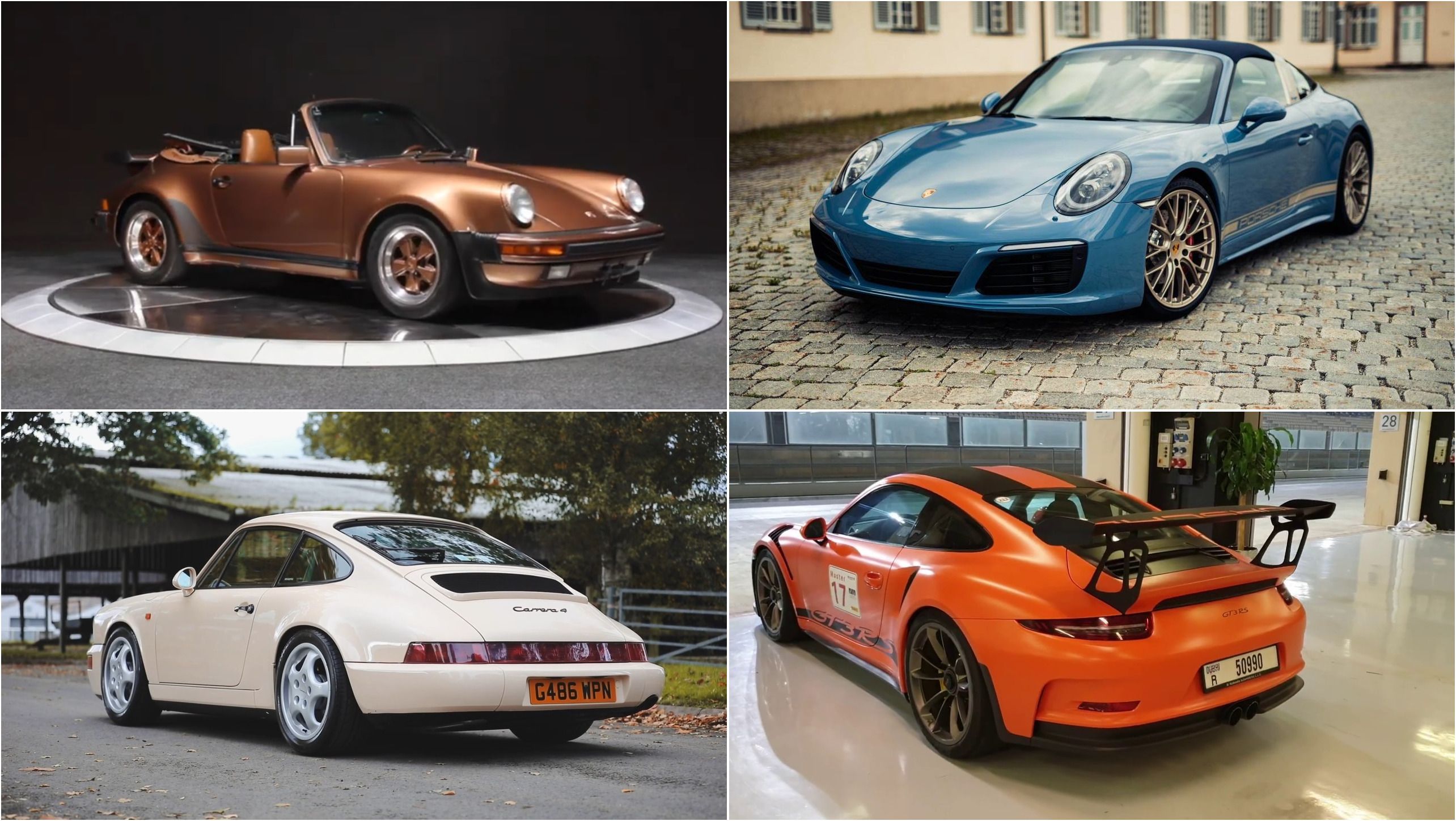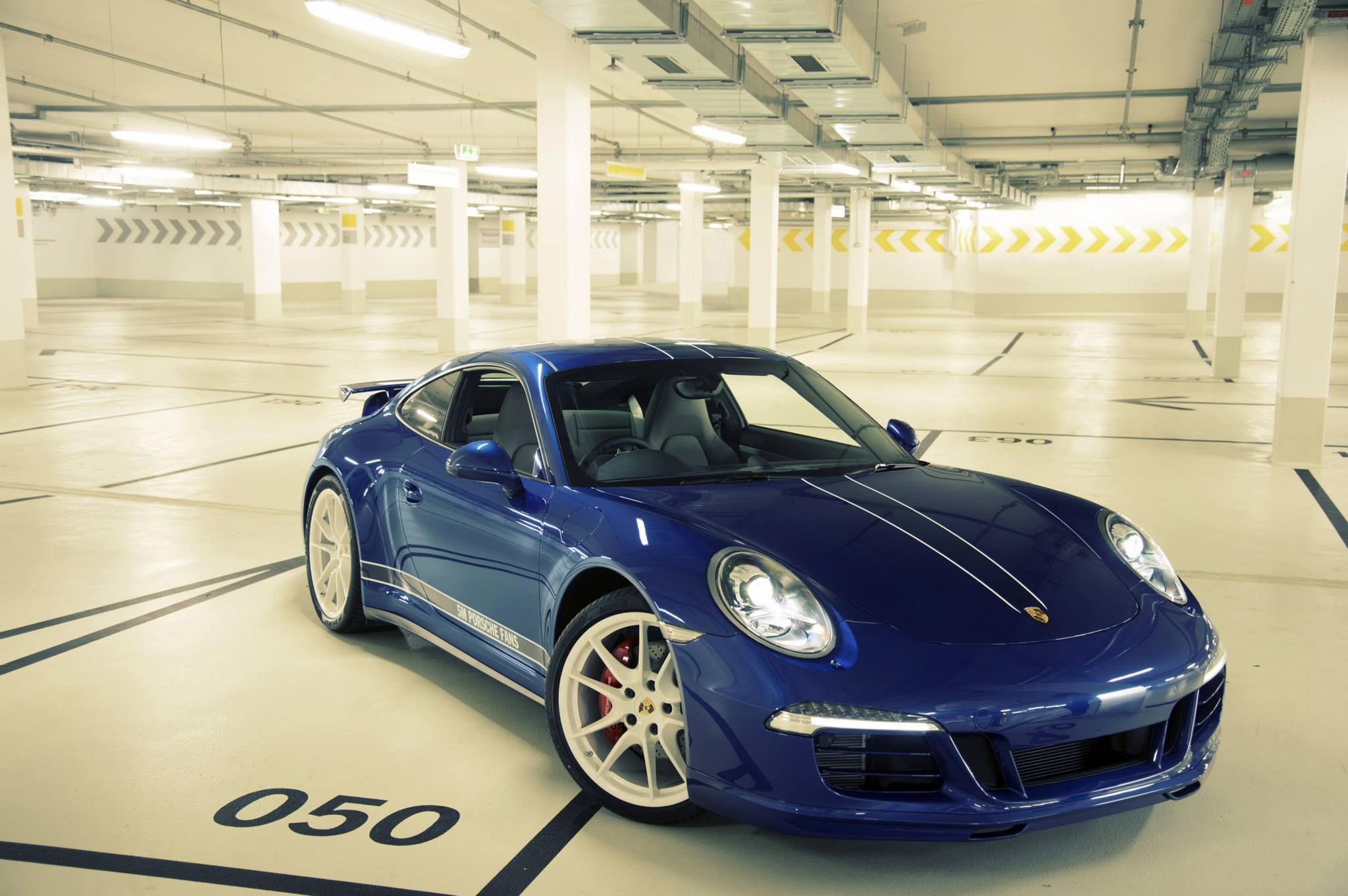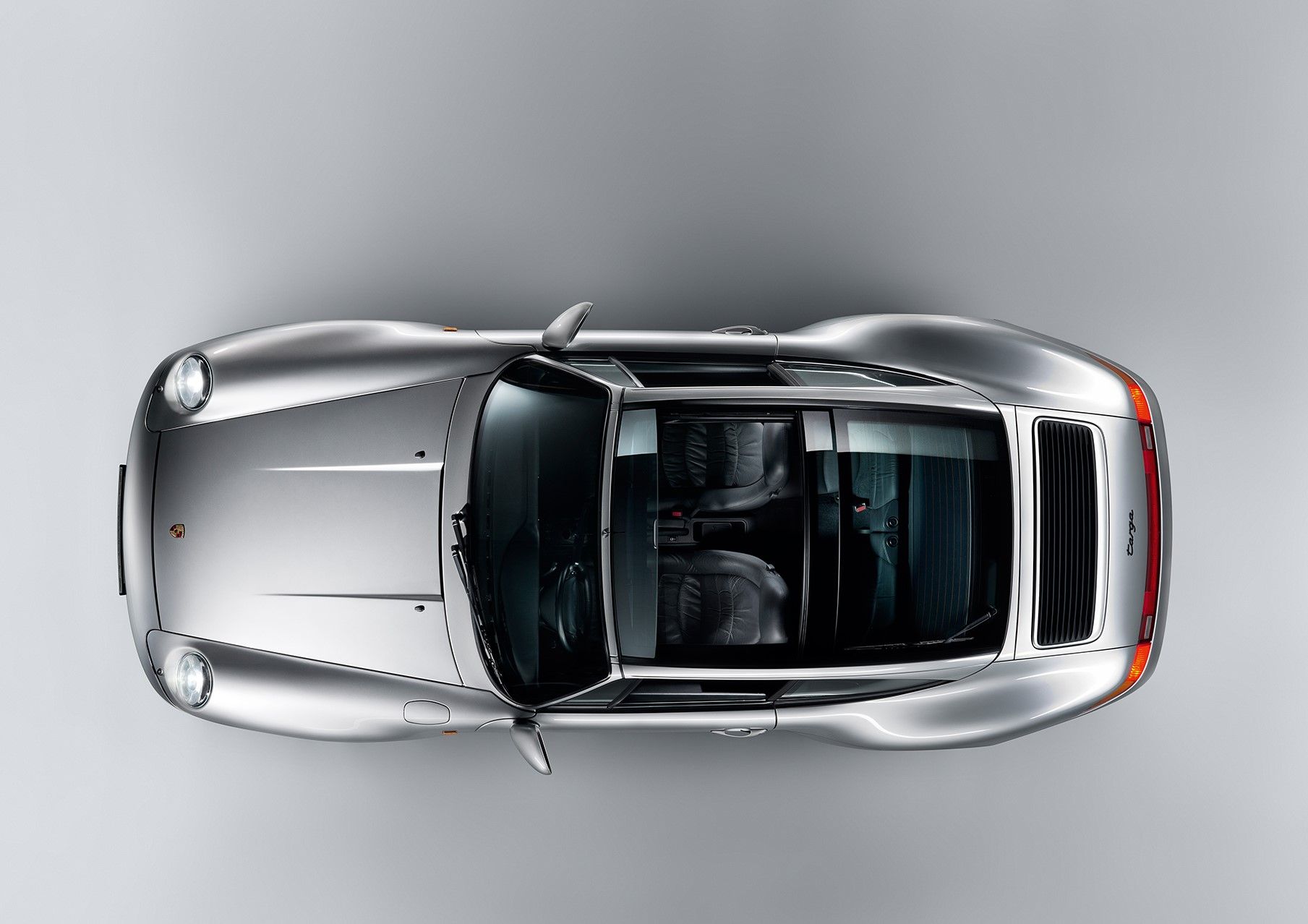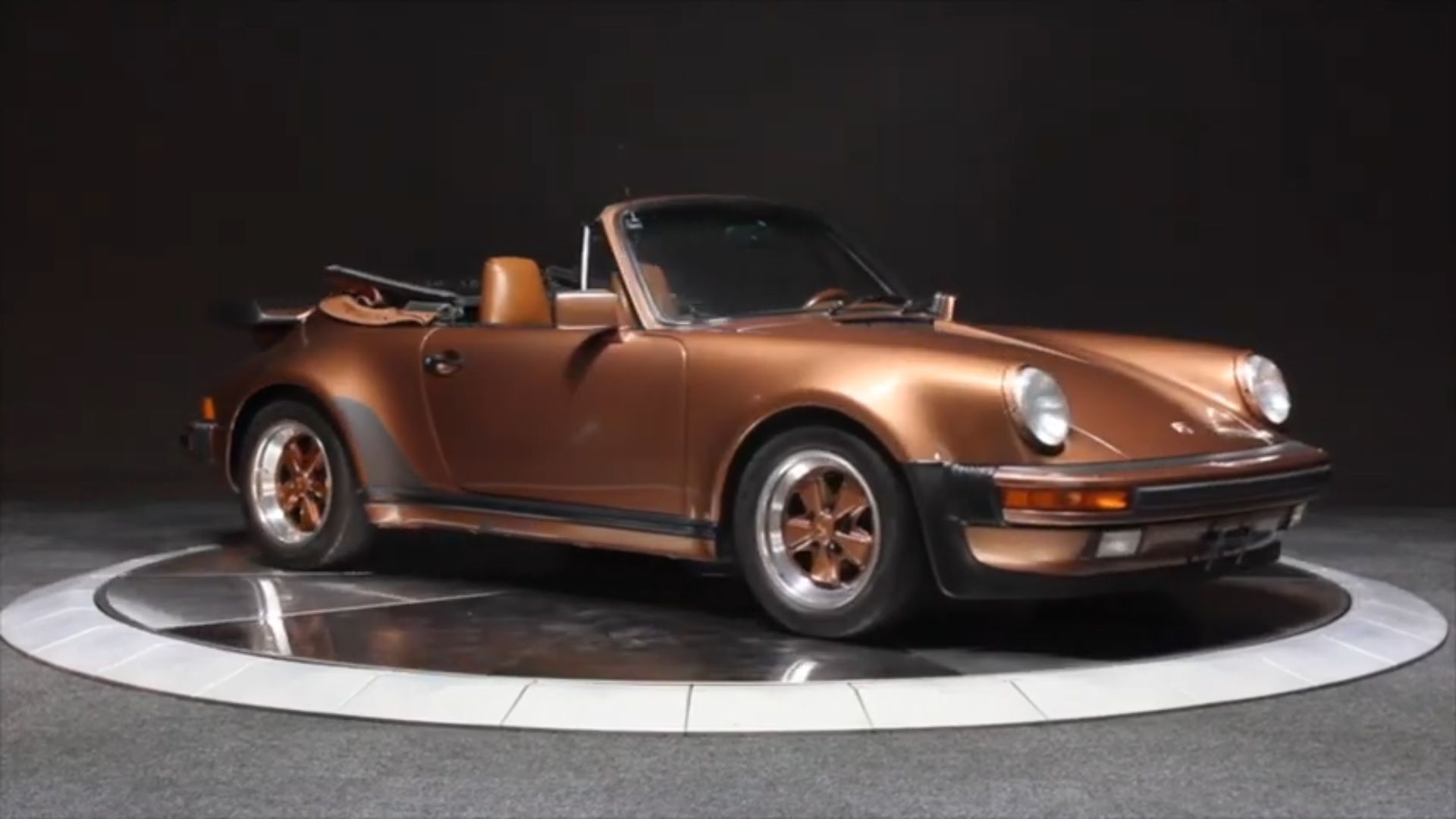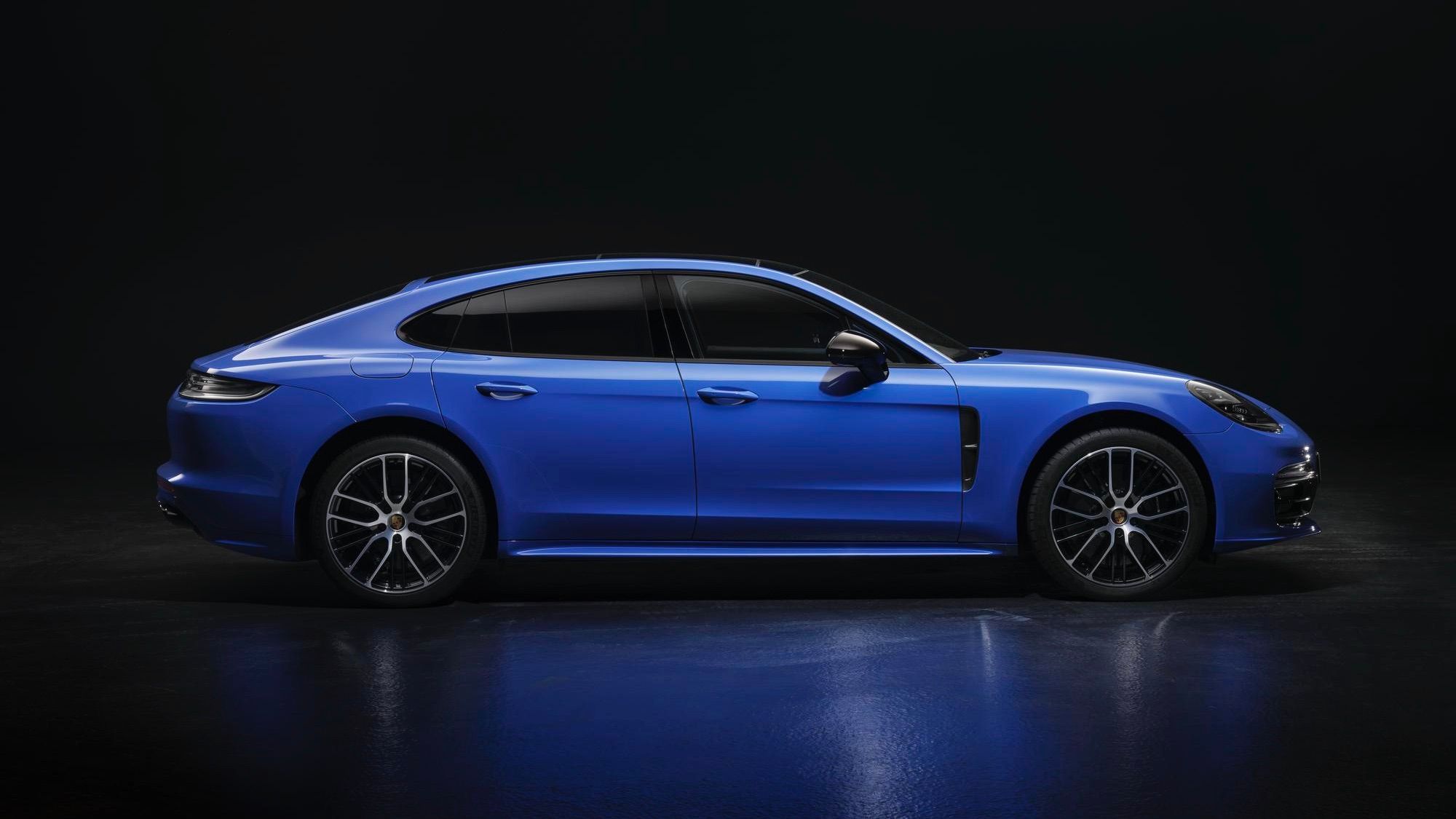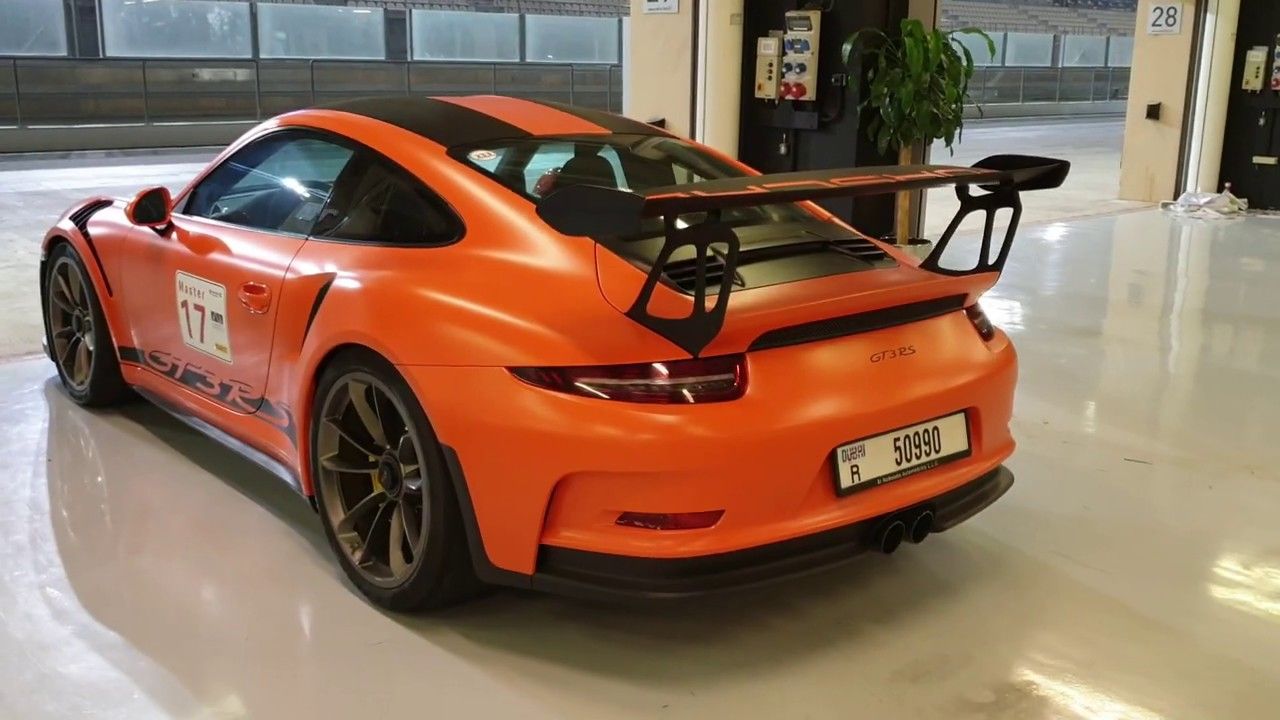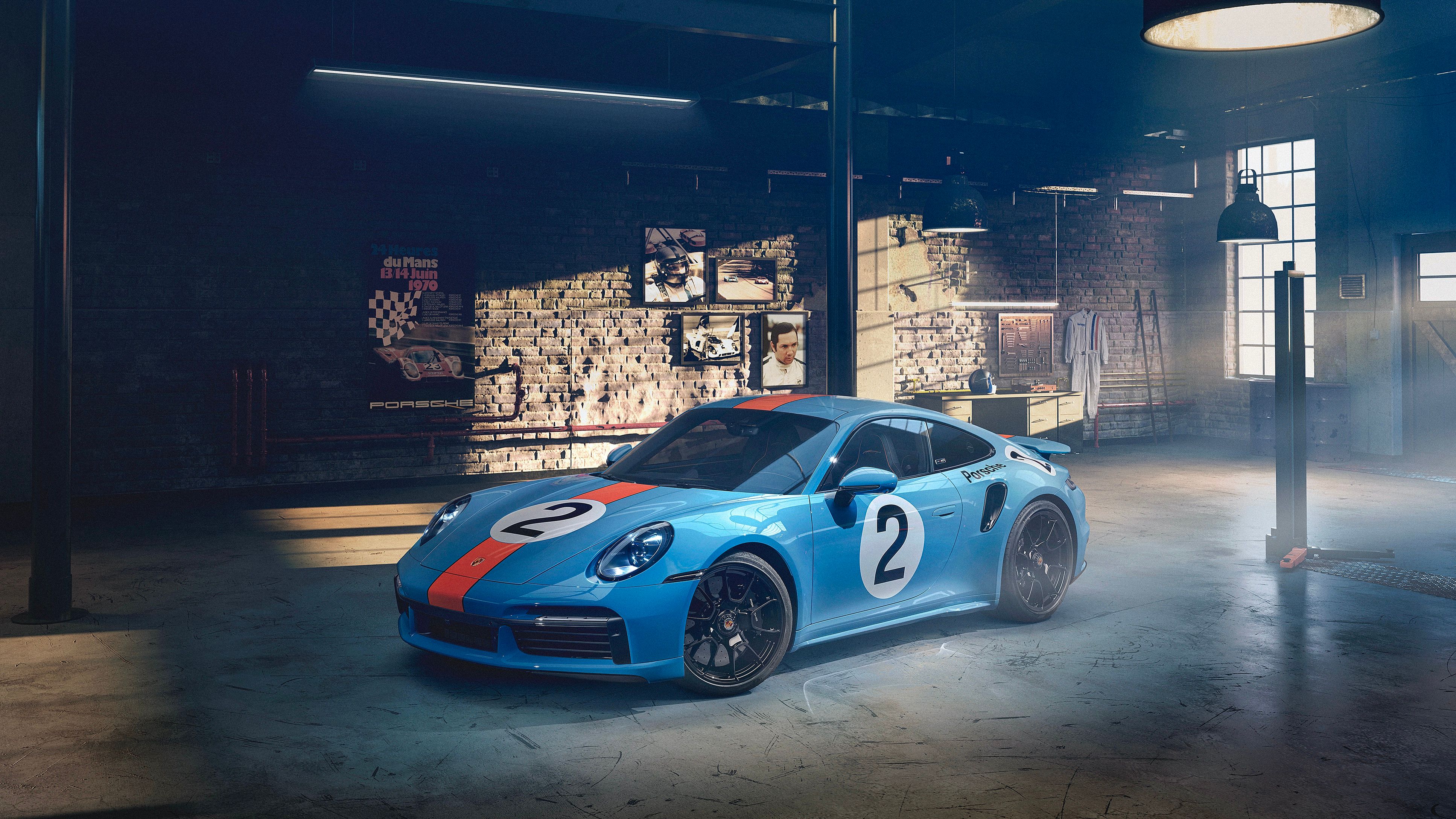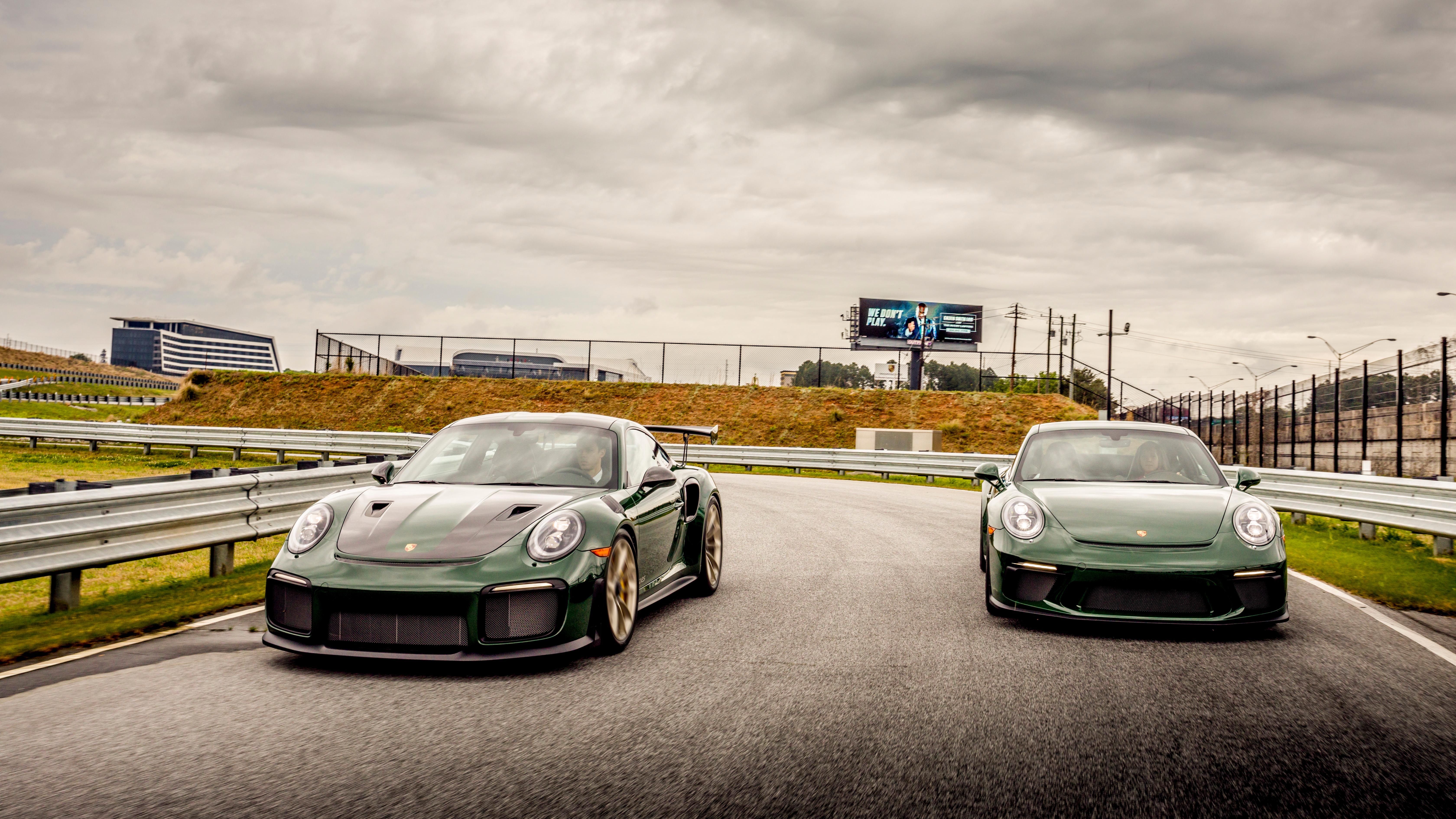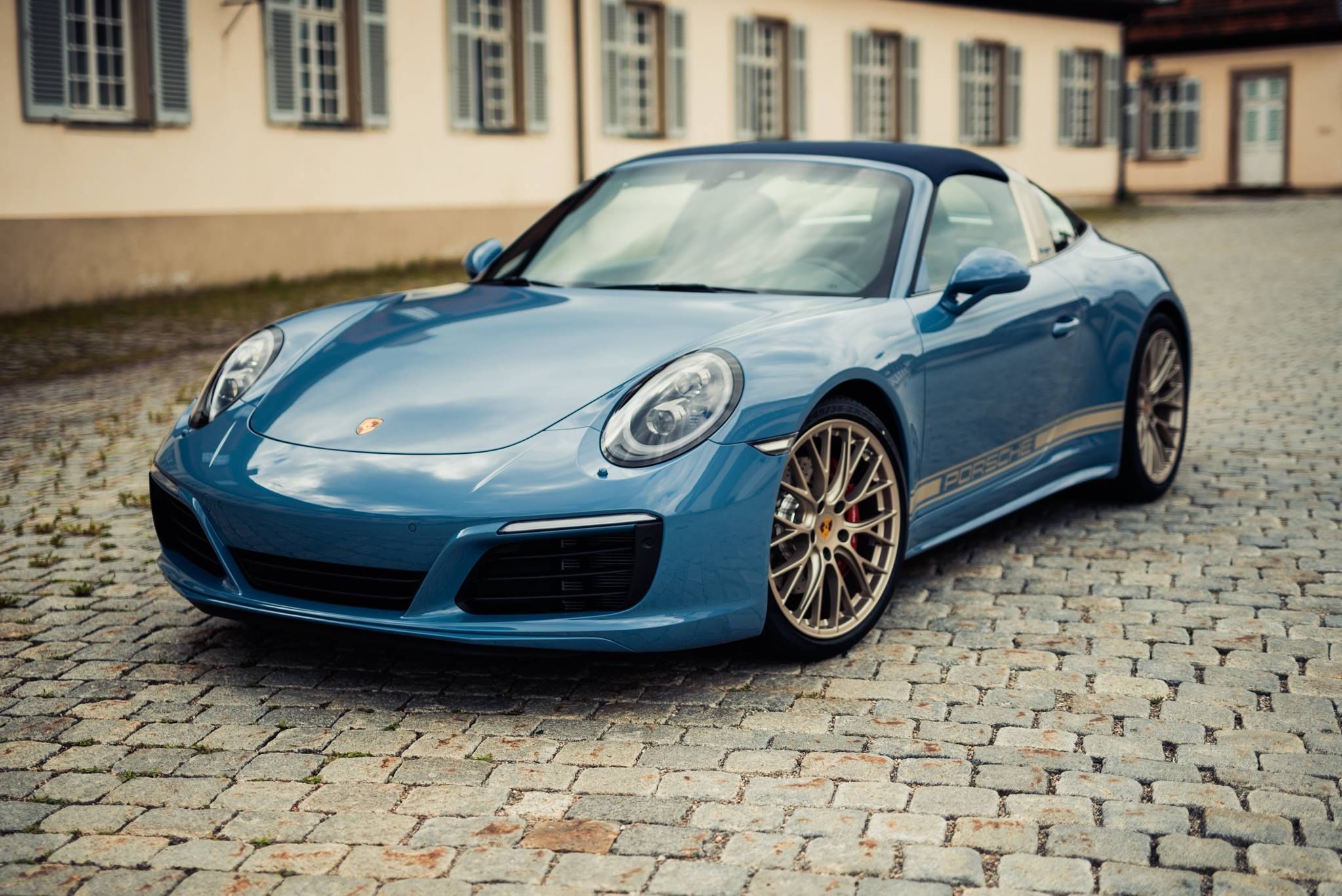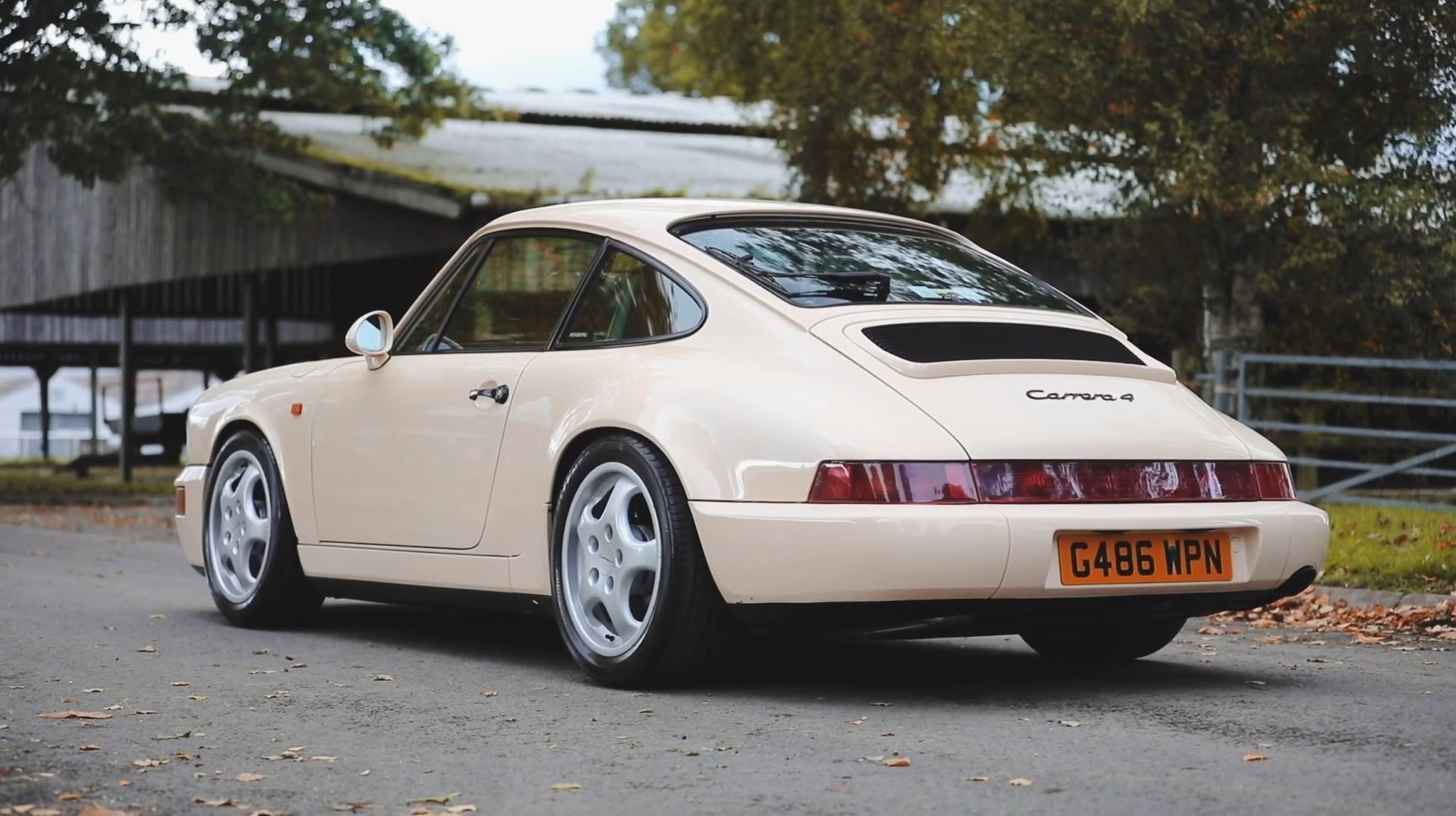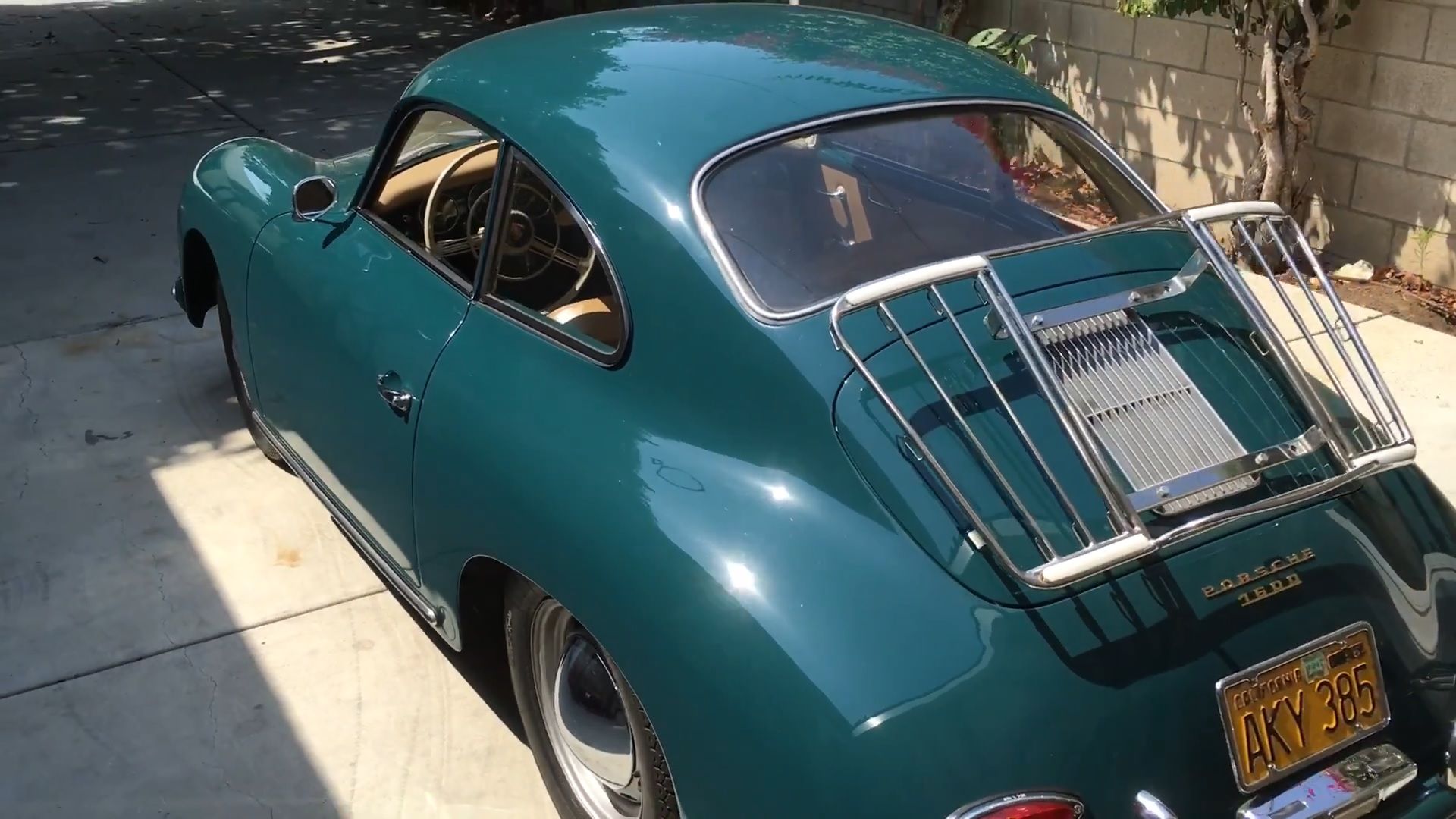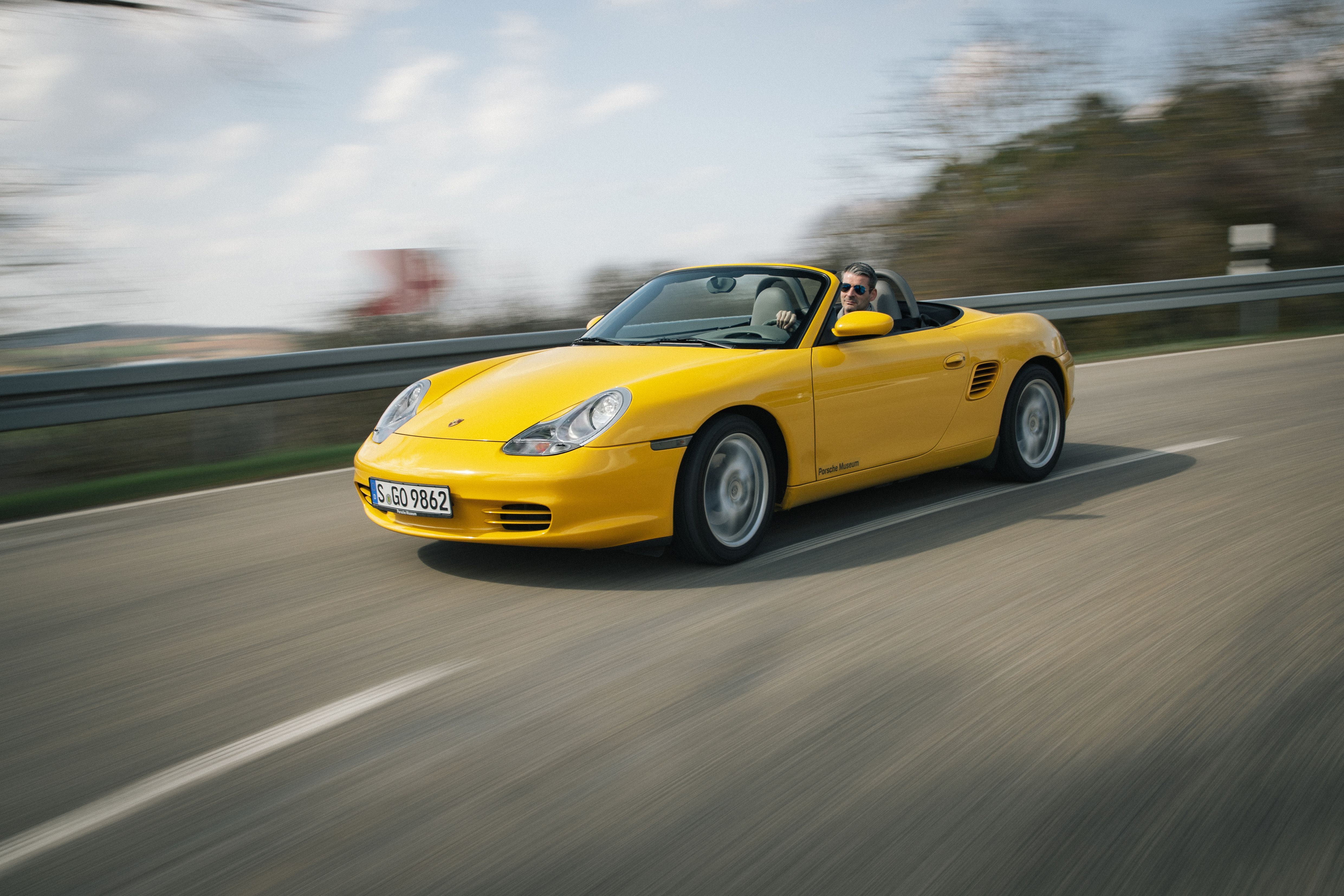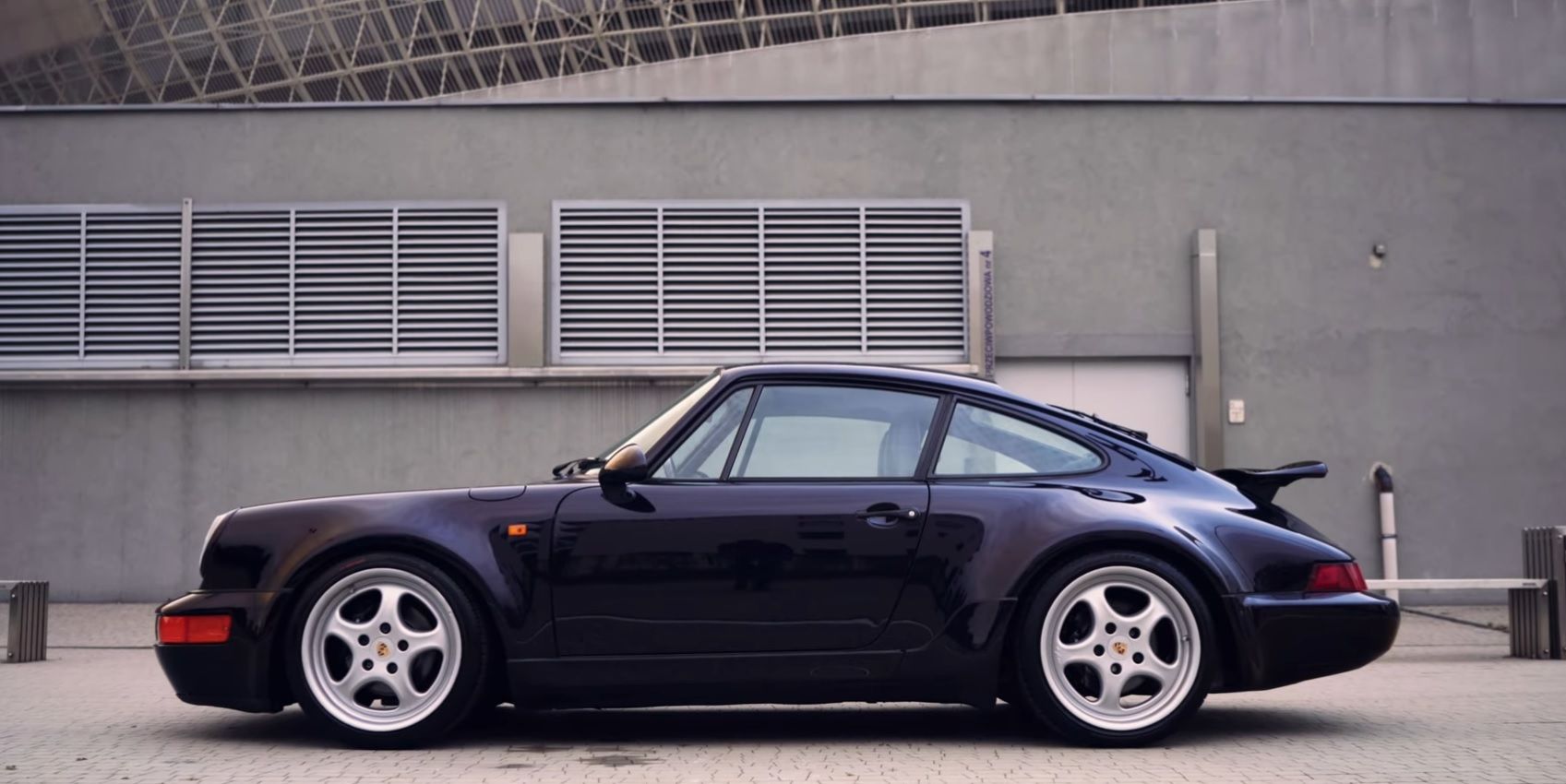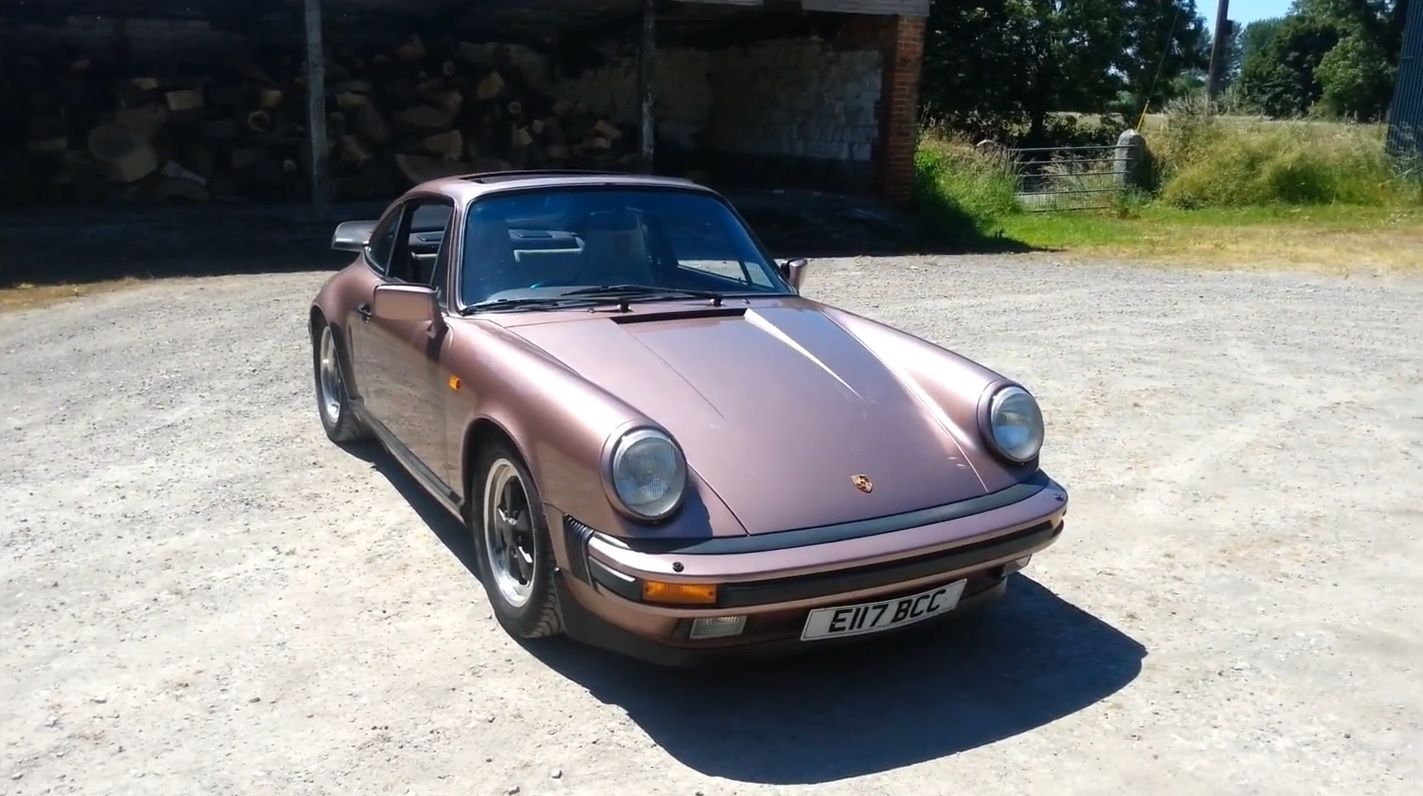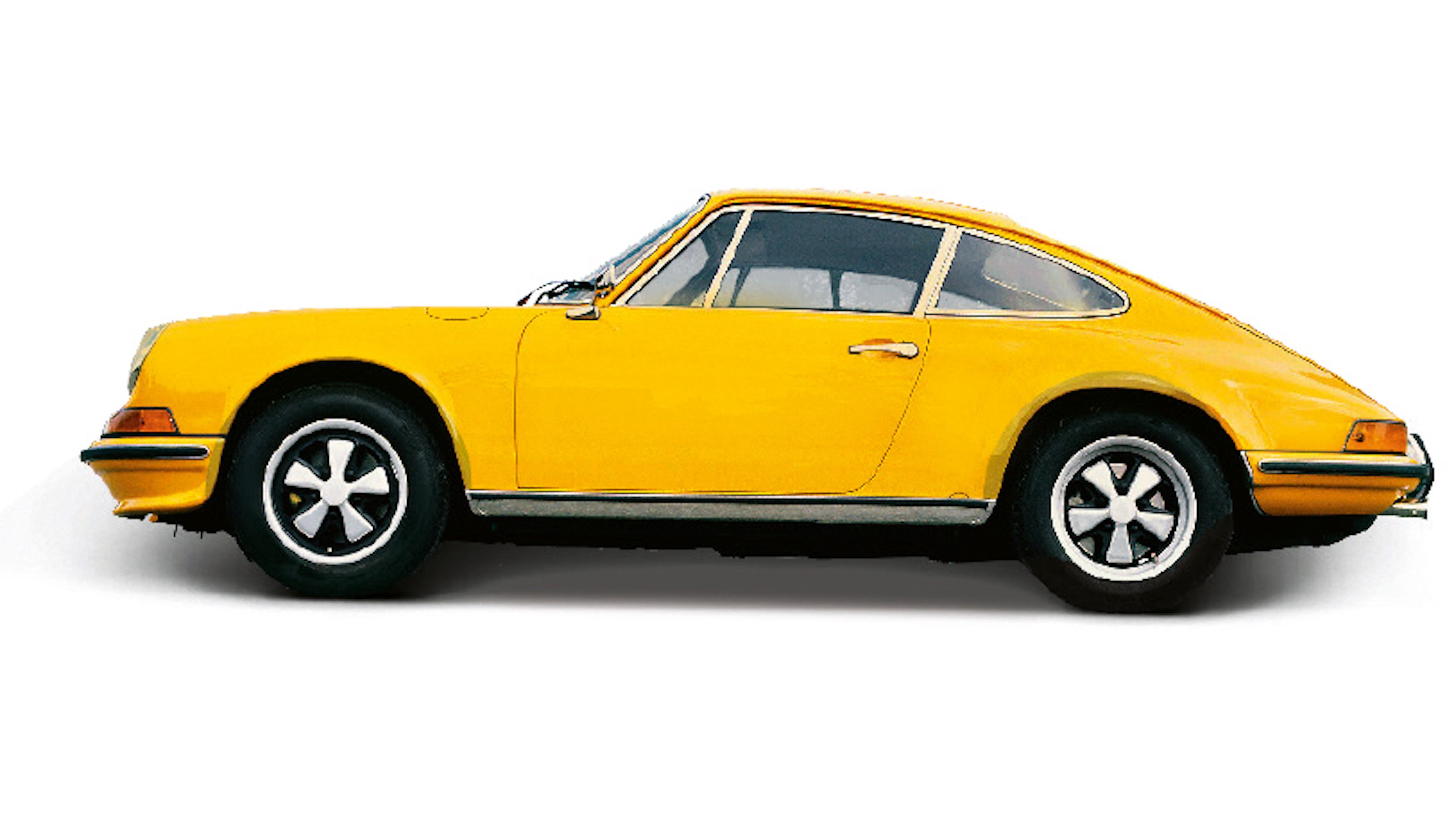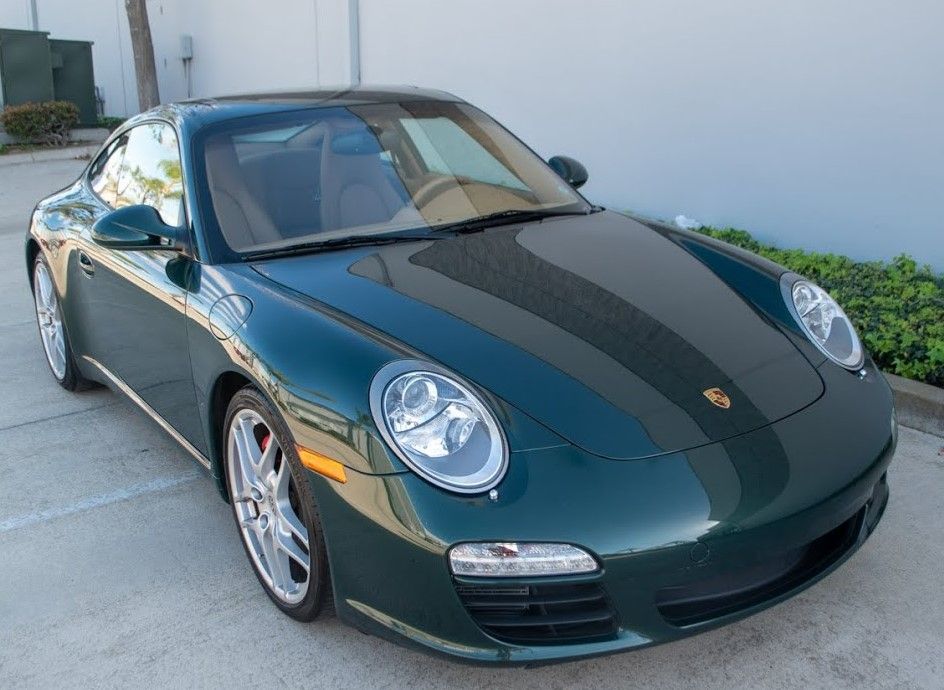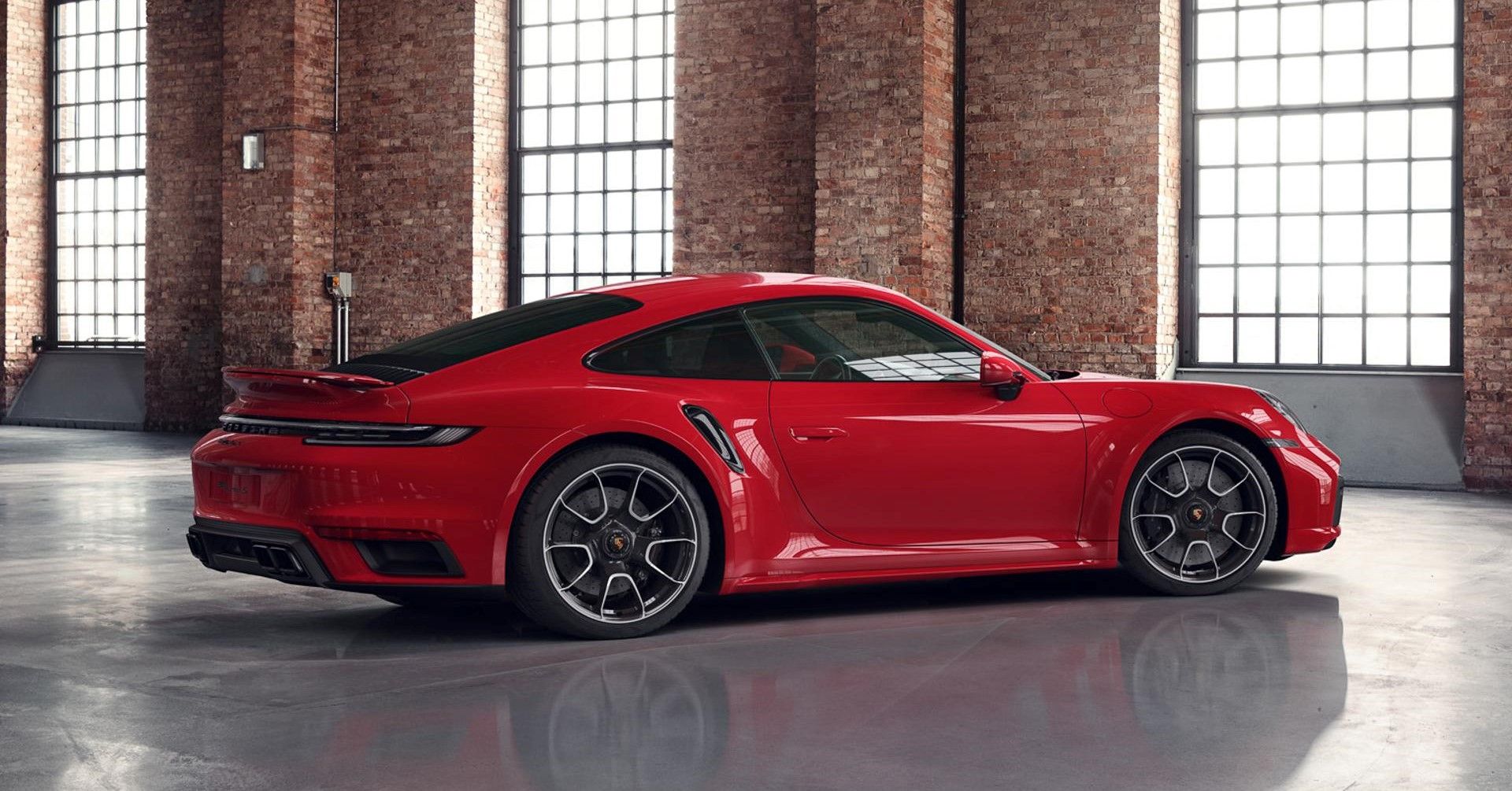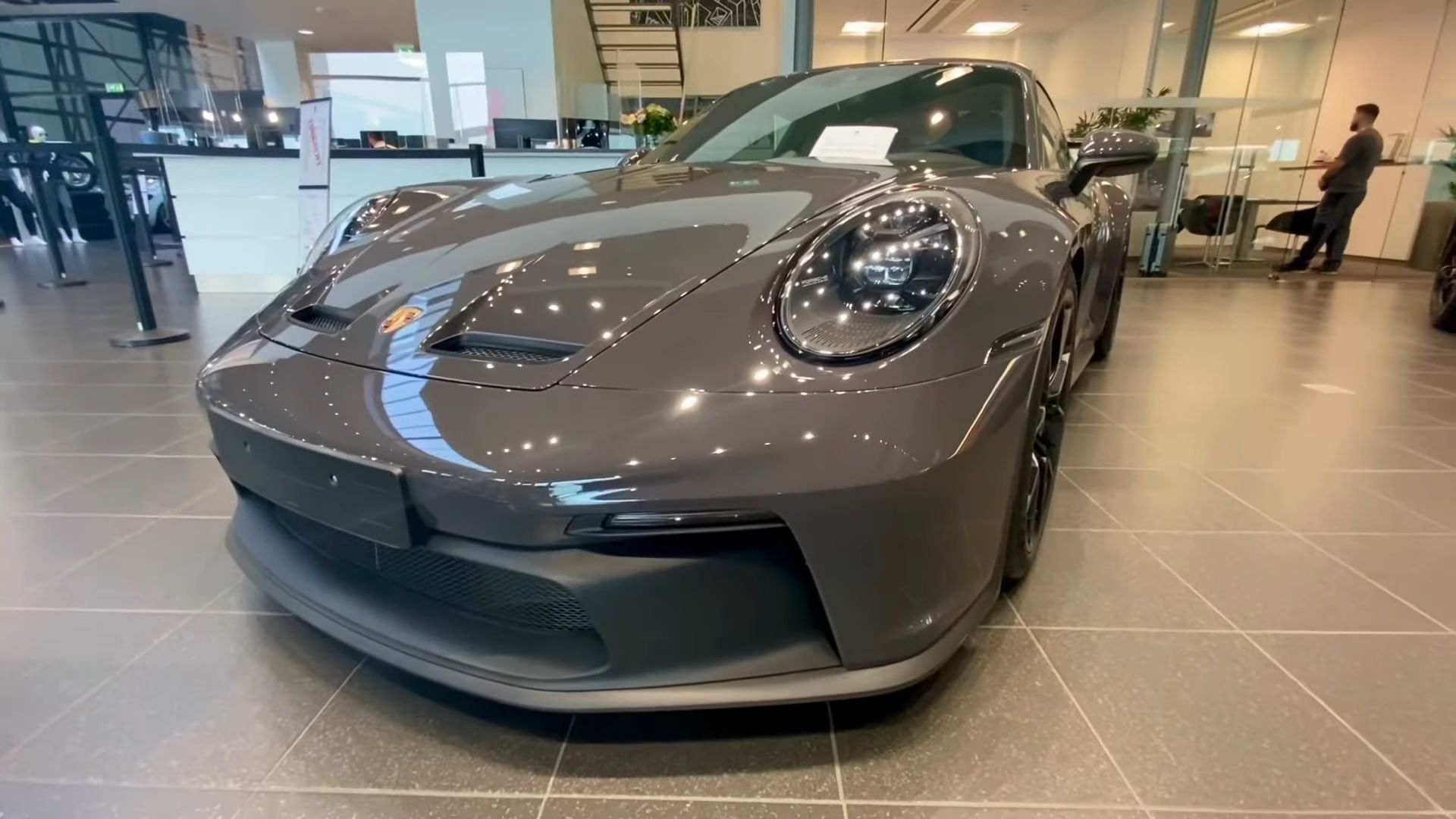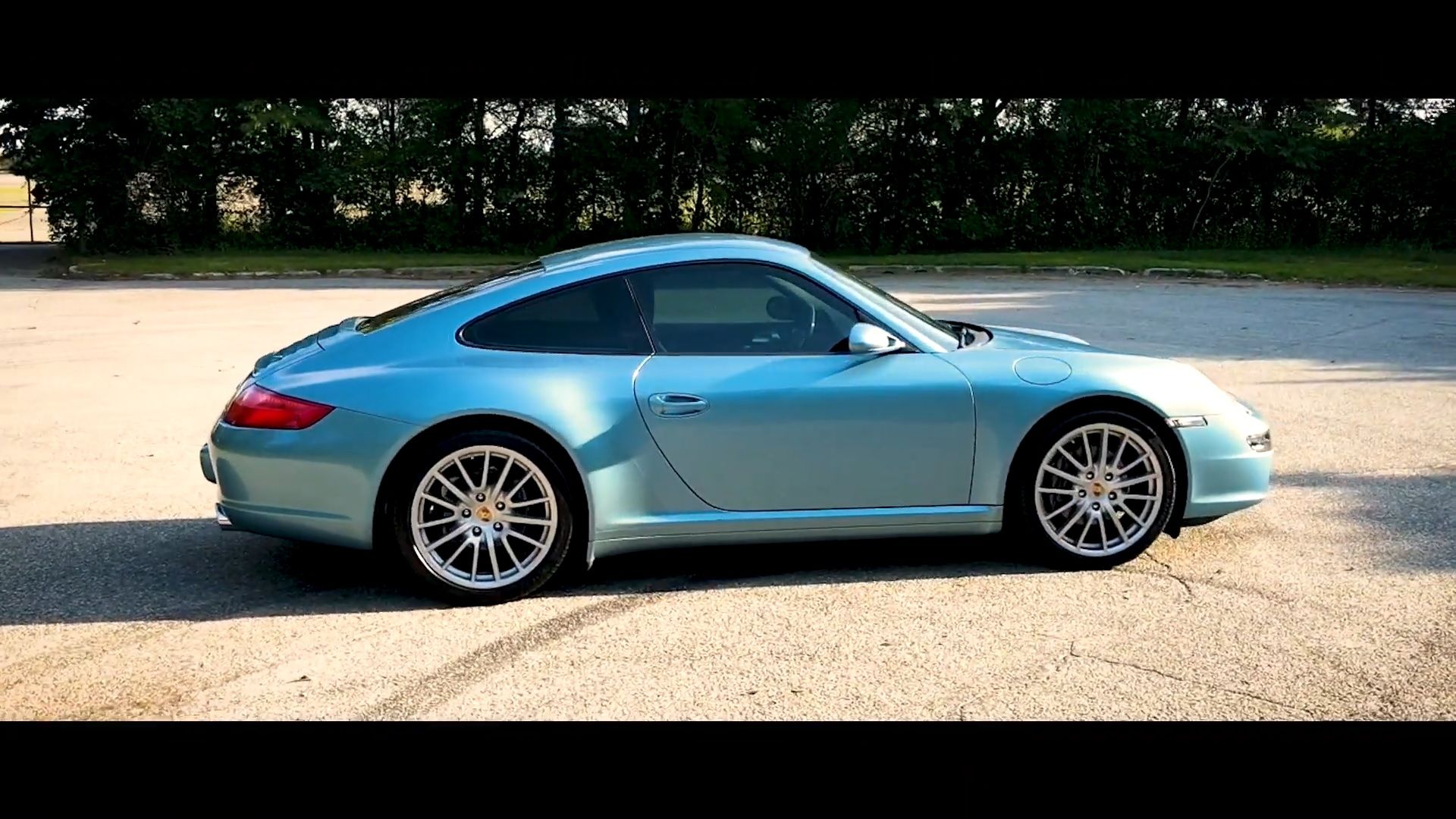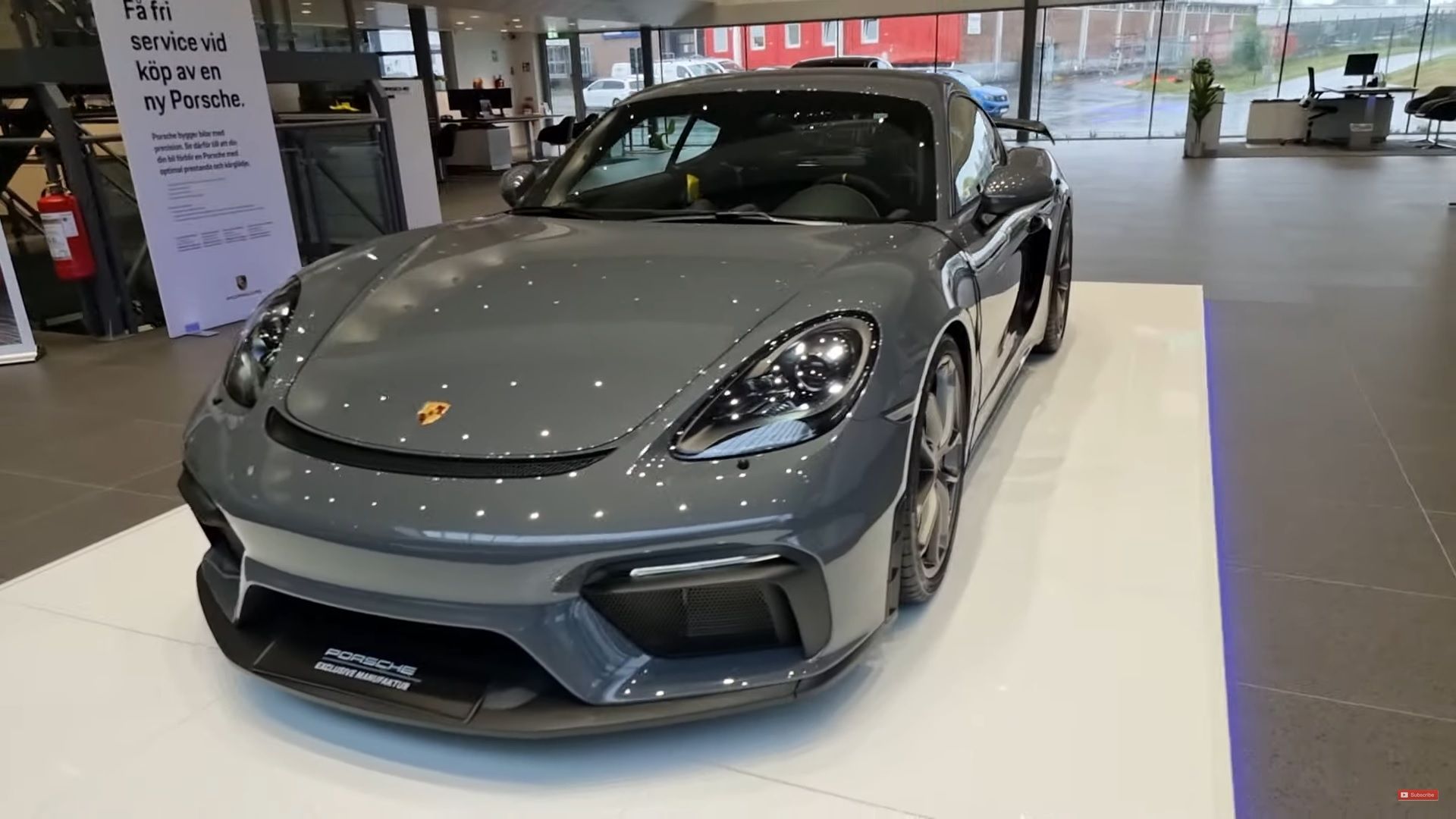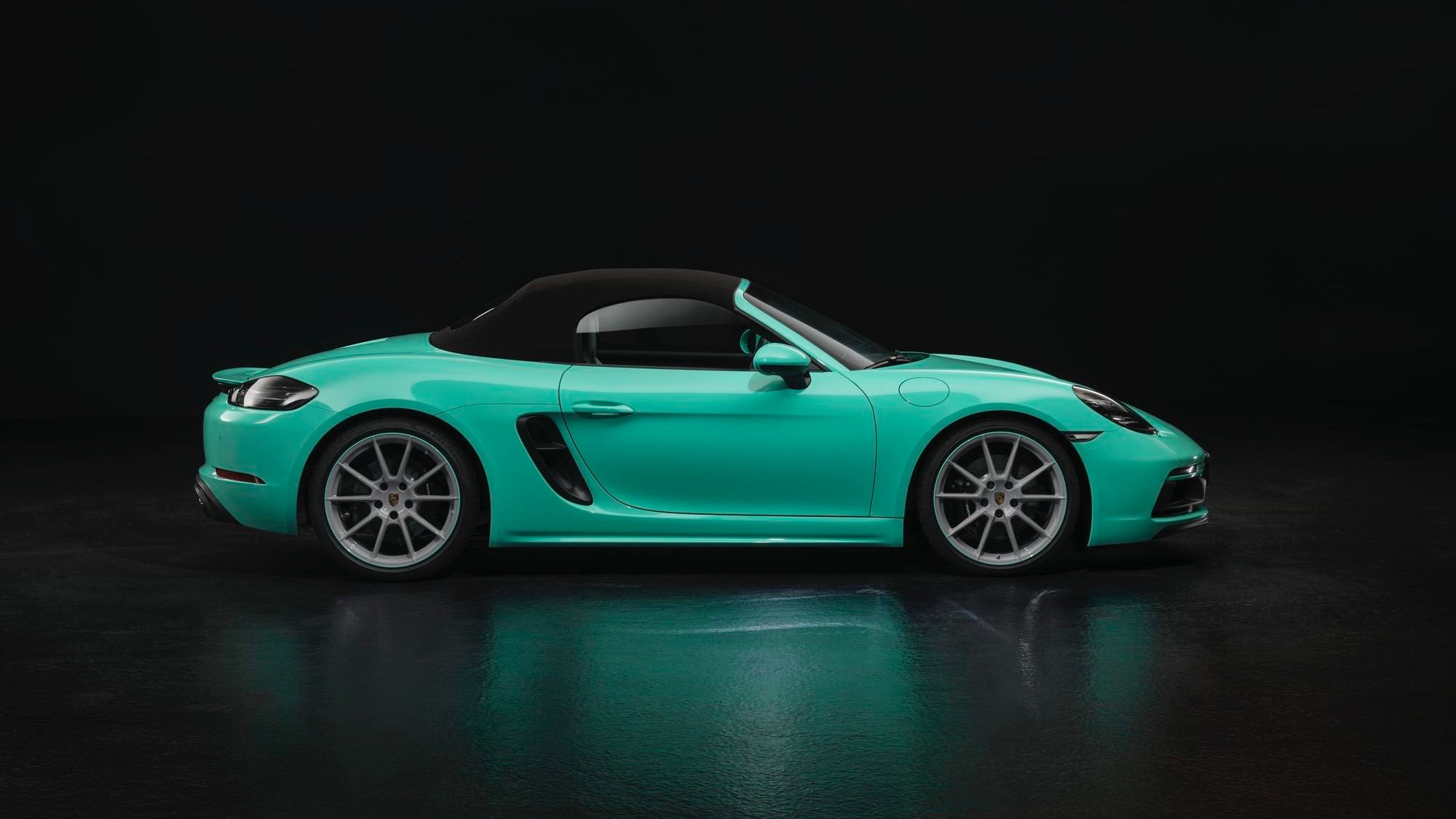Porsche remains a brand that heavily advocates tradition. While the 911 is one of the most obvious examples of that, Porsche’s paint-to-sample program takes it a step further, allowing you to create your own custom color and send it to Porsche for approval. You can also choose from a list of approved custom colors, many of which harken back to Porsche’s past. With this in mind. Here are the best Porsche paint-to-sample colors.
Aqua Blue Metallic
Starting off with a relatively recent shade of blue, the Aqua Blue Metallic is a medium-dark shade of blue, first introduced in 2009, with the Porsche 997.2. Like most of Porsche’s blue colors, the Aqua Blue Metallic was only around for a short time, being available, as a standard color, until 2013. The color, itself, is dark enough to give the car a more mysterious look, but bright enough to reveal the voluptuous forms of the Porsche 911.
Arctic Silver Metallic
The Porsche 911 was always one of the more subtle sports cars and the Arctic Silver Metallic is a special color that perfectly complements that. The color was introduced in 1995, with the Porsche 911 (993) Targa.} The Arctic Silver Metallic, also known as Polar Silver was similar to the GT Silver, available on the Porsche Carrera GT, of which 1,270 were built. Out of those, only 58 had Paint-to-sample colors and only one was finished in Arctic Silver Metallic.
Cognac Brown Metallic
Any shade of brown is not usually associated with performance. This is especially the case with the Cognac Brown Metallic, which was available on two models, in 1989 and 1990. Those were the Porsche 911 (964) and Porsche 928.} Most would probably agree that the shade of caramel metallic is a better match for the more laid-back Porsche 928, which is more of a grand tourer than a sports car.
Maritime Blue
Maritime Blue is a bold non-metallic color that followed in the footsteps of Porsche’s Emanel Blue, Porsche Arrow Blue, and Porsche Mexico Blue, from the 1960s, 1970s, and 1980s, respectively. The Maritime Blue has most notably been featured on the Porsche 964 between 1991 and 1993. Other Porsche models to get the distinctive shade of blue are the 1979 Porsche 911 SC, 2011 Porsche 911, 1991 Porsche 944, 1992-1994 Porsche 968, and 2016 Porsche Boxster.
Gulf Orange
Porsche’s rich motorsport history has spawned not one, but two iconic colors, available in Porsche’s paint-to-sample program. Gulf Orange, like Gulf Blue, is mostly associated with the Porsche 917K from 1969.} However, the bright shade of orange was first seen on the 1967 Gulf Porsche 910 race car. Although it was the secondary color of the iconic Gulf livery, the bright orange is a high-impact color that managed to establish itself as one of the most popular colors for Porsche's performance versions.
Gulf Blue
You probably expected this. Like the Gulf Orange, the first Porsche to feature the Gulf Blue was the 910 race car and not the legendary 917K. This was the primary color of the Gulf livery and unlike Gulf Orange, it is not a high-impact color. Instead, the subtle shade of almost-sky-blue makes for a nice contrast with the bright orange. Nowadays, Gulf Blue and Gulf Orange are both available as separate colors (and together), through Porsche’s paint to sample program.
Porsche British Racing Green
British Racing Green is a legendary color and as the name suggests, the signature color of many British race cars, most notably the 1950s Jaguar D-Type. Originally, a non-metallic color, Porsche decided to introduce their own version with an iridescent finish, which made the dark shade of green pop out even more, in the sun. The color was introduced for the Porsche 997.2 and 987c, but can also be found on various versions of the Porsche 991.
Aquamarine Blue
This is one of the oldest Porsche colors on the list, dating back to the 1950s. While nowadays there is a metallic version of this color, it was originally a non-metallic blue color that first appeared on the Porsche 356A (1955-1959).} A very distinctive shade of blue that, from certain angles, almost looks like dark turquoise. Sadly, a rarity nowadays, especially in the non-metallic guise.
Apricot Beige
Introduced in the late 1980s, Apricot Beige is one of the rarest Porsche beige colors ever “brewed”, being available for only two years – 1989 and 1990. It was available on the Porsche 928 from 1989 to 1990, the 911 Carrera in 1989, and for the broader range of 911 models, in 1990. The shade of beige is almost identical to the earlier Bamboo Beige color.
Fjord Green
One of the oldest colors on the list, Fjord Green was first introduced in 1957, with the Porsche 356. Until then, the available colors were predominantly red, silver, and white. The non-metallic color is a nice blend of blue, gray, and green, with the different shades taking preponderance, depending on the light and angle. A perfect color for a classically-inspired version like a 911 Sport Classic, for example.
Speed Yellow
This bright yellow shade is already one of the most popular Porsche paint-to-sample colors, and for good reason. Speed Yellow is a later, slightly more orange version of the later Racing Yellow. It’s a proper color for exotic cars as it is very similar to other yellows such as Ferrari Giallo Fly, Corvette Yellow, or even Lotus Yellow, as noted by rennbow. The color first appeared in 1993, for the 911, but was also available on the 968, 986 Boxster, and 987 Cayman.
Viola Pearl
Viola Pearl can easily be considered an evolution of Porsche’s Violet Blue Metallic, first introduced on the 1990 Porsche 911 (964). It was the first color that featured jewel-like motives, and in 1999, a darker version with a pearl finish was also introduced – Viola Pearl. The dark pearlescent purple shines particularly strong in the sunlight and from some angles, looks almost blue. It was first present on the Porsche 996 but goes particularly well on a Porsche 991 GT3 RS, with contrasting yellow accents.
Cassis Red Metallic
Porsche’s Cassis Red is a very unusual color, in that it is very difficult to describe what it actually is. The color gives a very Miami-like vibe, almost resembling a flamingo with a suntan, if such a thing exists. It was first introduced in 1987 for the Porsche 911 Carrera and Porsche 928, but was later offered on the broader range of 911s and the 968. Although it’s called red, it balances between purple, pink, and bronze. Words really don’t do this color any justice so, it’s best to see and decide for yourselves.
Signal Yellow
If Speed yellow has a slightly orange note to it, then Signal Yellow is a shade of yellow that really aspires to be red. The rich, non-metallic shade is part of a classic palette of Porsche colors, commonly referred to as “Skittles” colors, by enthusiasts. The color was introduced in 1966 and was available on the Porsche 911 and 912. Porsche stopped offering it as a standard color, back in 1973.
Malachite Green Metallic
There is something about adding a touch of grey to any bright color. It seems to work particularly well on with this dark shade of metallic green, which manages to make the car stand out without being too much in your face. The color closely resembles the Aston Martin racing green, seen on the DBR GT1 race car. It was available, as a standard color, from 2005 to 2012, on the Porsche 997, and on the Boxster and Cayman from 2008 to 2010.
Guards Red
One of the most iconic and sought-after Porsche colors is Guards Red. Few colors are as appealing, for a performance car as a shade of classic, bright red, which is why this shade of bright red was available to a lot of Porsche models, among which the 930, 928, 924, 944, 968, 959, and others. The color stands out thanks to some orange being added to the mix. It was introduced for the 1974 model year of the 911 and with certain interruptions, has been available on the 911 until 2019.
Grey Black
This is a relatively new color, being introduced in 2010. It is most notably featured on the Porsche 997 GT3 RS. It was also available as a standard color on the 2010 Porsche Boxster. The non-metallic color is quite similar to Slate Grey, but with less blue and more brown in it. It goes especially well with the 997 GT3 RS’ contrasting accents, in bright colors, such as orange and red.
Ice Blue Metallic
This is a classic Porsche color that was first offered in 1976, on the Porsche 930 and 912 E. However, it was also a standard color, until a few years ago, as it was offered on the Porsche 997 and even the 991, until 2018. The color was also available for the 2011 and 2012 model year of the Cayman and Boxster. The color is often compared to the older Horizon Blue, to which it is quite similar.
Grigio Telesto Pearl
Grigio Telesto can best be described as a darker version of the, recently popular, Nardo Grey. However, this bold shade of grey also has less green in it, by comparison. Interestingly enough, the color can also be found in BMW’s Individual options list. It was available as a standard Porsche color on the 2007 and 2018 model years of the Porsche 911. Telesto means “success” in ancient Greek.
Mint Green
This is one of Porsche’s most distinctive colors, from the early-1990s. The pastel turquoise color was introduced in 1991, for the Porsche 911 and 928. In 1992, it also became available on the 968. Porsche stopped offering Mind Green, as a standard color, in 1995, when production of the Porsche 928 ended. Mint Green is, actually, a brighter version of Jade Green, which came out in 1972.

